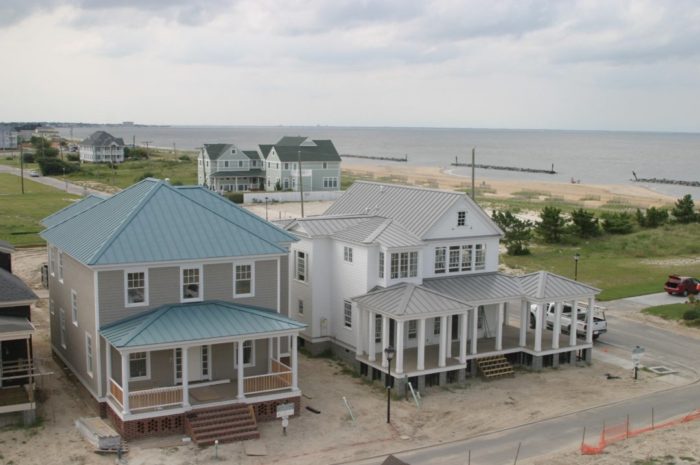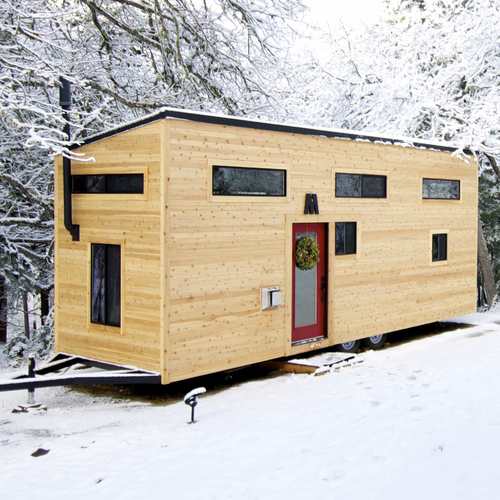
Image Credit: Lynn Underwood
The materials you select will help determine just how green the home is. Materials vary in terms of energy efficiency and environmental impact. New products come on the market every day. and their value and environmental friendliness are touted at trade shows. But can you get a permit and pass inspections if you commit to building with these new products?
As a building official, it is my job to help ensure the safety of people who will live or work in the buildings of my community. The standard I use to make that happen is the building code.
The International Residential Code (IRC) is designed to distinguish between minimum safety requirements and those beneath that building safety platform. The code’s language falls into two major code requirement categories: prescriptive (think “prescribed”); and performance (think: “it must perform”). Both are sprinkled throughout the code for various reasons: It may be hard to define safe installation in prescriptive language; or it performance language may not be user friendly enough to adequately describe the right way to do something.
Use of materials is established through prescriptive language. For example, the IRC uses prescriptive language to approve the use of wood framing, light-gauge steel framing, concrete, and masonry.
Green building is more concerned with performance language because you seek to use materials that are not in the IRC’s prescriptive specifications. Most homes are built according to IRC, so the code covers only a few popular building materials. It does not include straw bale, adobe, or similar sustainable material types. It would not include an innovative method of using one of these few popular materials either. For those, you need a different approach.
IRC Section R104.11 deals with alternative materials and methods of construction and has been part the code from the beginning. It allows the flexibility necessary for a building official to accept any viable material or method of construction as long as it satisfies the intent of the code.
R104.11 Approval of Alternative Materials, Design, and Methods of Construction and Equipment:
“The provisions of this code are not intended to prevent the installation of any material or to prohibit any design or method of construction not specifically prescribed by this code, provided that any such alternative has been approved. An alternative material, design or method of construction shall be approved where the building official finds that the proposed design is satisfactory and complies with the intent of the provisions of this code, and that the material, method or work offered is, for the purpose intended, at least the equivalent of that prescribed in this code. Compliance with the specific performance-based provisions of the International Codes in lieu of specific requirements of this code shall also be permitted as an alternate.”
This section is not limited to structural integrity. It could even mean health or sanitation standards as well. A better way to consider this provision is as a miniature code in itself. So ANY material or method of building MUST be approved as long as the intent of the code is satisfied. Examples of natural, sustainable materials that have been approved in building departments across the country include adobe, rammed earth, straw bale, COB, bamboo and cork.
Examples of manufactured product innovations include light-gauge steel framing, insulated concrete forms (ICFs), structural insulated panels, engineered lumber, I-joists, finger-jointed lumber, aerated autoclave masonry, EIFS, mortarless block — even water-saving measures such as waterless urinals. Examples of alternative techniques include frost-protected shallow foundations, green roofs, alternative wood framing techniques, gray water systems, rainwater harvesting. and even earth-ship buildings. Energy generation such as photovoltaic systems, wind generators, geothermal systems, and microcogeneration are also the result of scientific advances accepted through this provision.
In fact many current elements in the modern code had to work their way through this acceptance process. For example, ICFs and light-gauge steel framing are now in the code as prescriptive-use materials. The process of using the provision encouraging alternative materials has served as a means for practical testing to observe performance under real-life conditions.
In order for a building official to accept your alternative approach, however, YOU must demonstrate how it satisfies the intent of the code for that condition. How do you do that? There are lots of ways. Here’s the code text for the testing that you must submit:
R104.11.1 Tests. Whenever there is insufficient evidence of compliance with the provisions of this code, or evidence that a material or method does not conform to the requirements of this code, or in order to substantiate claims for alternative materials or methods, the building official shall have the authority to require tests as evidence of compliance to be made at no expense to the jurisdiction. Test methods shall be as specified in this code or by other recognized test standards. In the absence of recognized and accepted test methods, the building official shall approve the testing procedures. Tests shall be performed by an approved agency. Reports of such tests shall be retained by the building official for the period required for retention of public records.
This is how you get there. There are a variety of ways in which to substantiate the viability of the material or method. The most common is an independent testing laboratory, which will test and then list the product for that use. Normally the manufacturer will seek this testing before marketing, but not always. The testing is based on certain standards unique to that material. The testing may be for structural integrity, fire resistance, resistance to moisture or similar performance measure. When complete and the material passes these rigorous tests, the manufacturer will take that data to an evaluation service and have the product listed. International Code Council Evaluation Service and Underwriters Laboratories are examples of product listing services.
Another common approach is to hire a local or regional registered design professional, such as an engineer or architect, to perform an analysis to submit. For example, let’s say you want to build a home using straw bale. There may be no independent listing for test results (there are now) for this new material so, your most economical approach is to hire an engineer to create a design. The engineer performs a rational analysis and demonstrates the integrity of the material, then seals the design and takes on much of the responsibility and liability for any potential failure.
Weekly Newsletter
Get building science and energy efficiency advice, plus special offers, in your inbox.














0 Comments
Log in or create an account to post a comment.
Sign up Log in